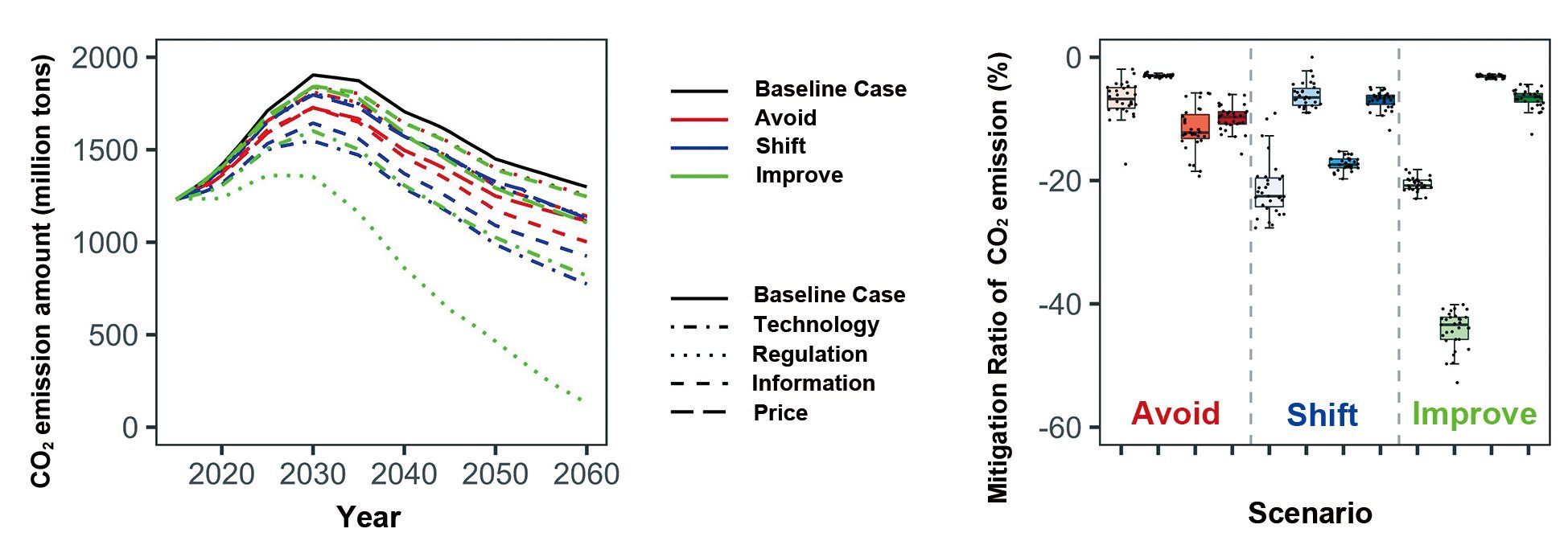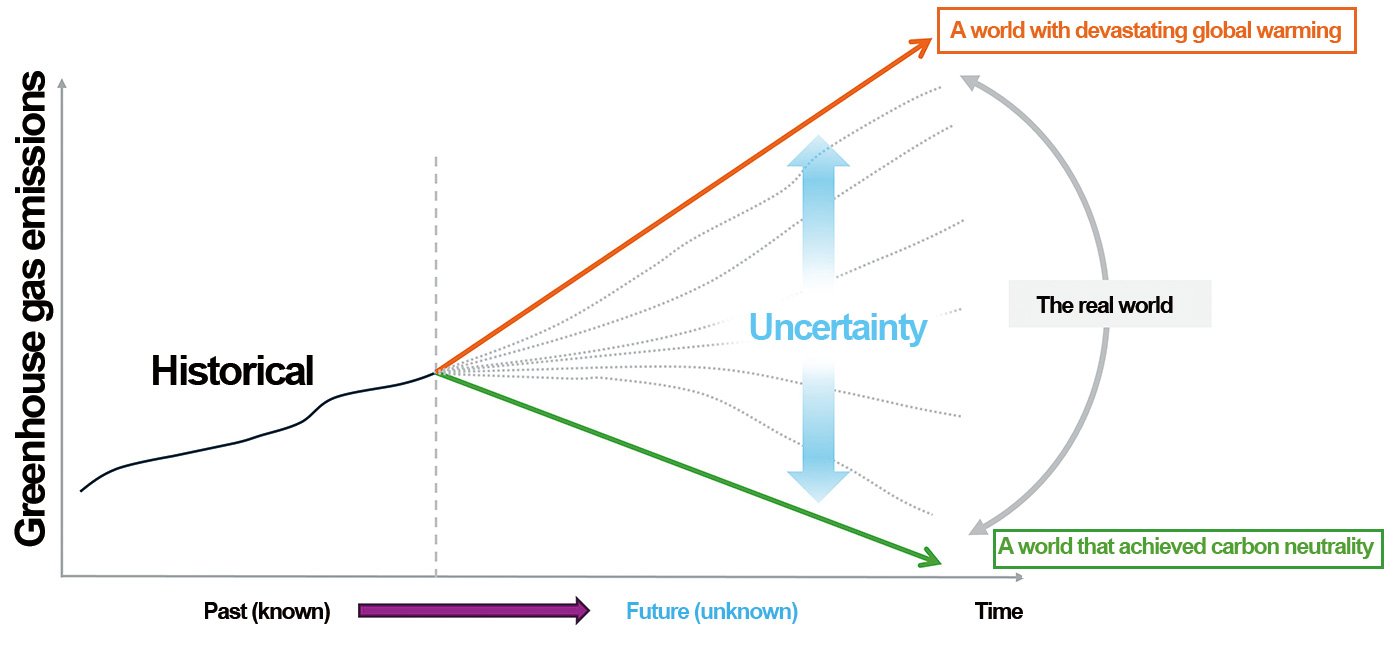Frontier Sciences
Runsen Zhang
Future of a Sustainable Low-Carbon City by a Transdisciplinary Approach

Decarbonization is urgently needed to counter global warming. Therefore, updating policies on urban environment, structure and development is necessary for climate change solutions. I study and design concrete schemes for a sustainable low-carbon society using an integrated assessment model that fuses diverse fields, including urban engineering, environmental science and data science.
Runsen Zhang
Associate Professor
Sustainable Society Design Center
https://www.k.u-tokyo.ac.jp/en/gsfs/faculty/runsen_zhang/
In recent years, global warming has become a global environmental issue and has gained increasing attention. Greenhouse gas emissions, a major cause of global warming, are attributed to urban activities (Figure 1).

Figure 1
Energy consumption and CO2 emissions are concentrated in large cities.
CO2 emissions are generally higher in urban areas, where energy consumption by households, businesses, and transportation is more concentrated than in other areas. Therefore, to achieve carbon neutrality, the following are essential: urban redesign and intensification, promotion of public transportation, introduction of renewable energy, promotion of low-carbon material architecture, prevalence of electric cars, improvement of pedestrian space and bicycle roads and urban greening.
I pursue a transdisciplinary approach to contributing to sustainable, low-carbon urban planning and development—with urban engineering as a core field and integrating different academic fields—to combine knowledge from science, humanities and social sciences. I aim to integrate science and engineering (infrastructure planning and management, traffic engineering, environmental science, energy engineering, geographic information science and data science) and humanities (economics, geography and public policies). I am developing an integrated assessment model for suggesting effective measures to discern patterns of energy consumption and CO2 emissions in the entire urban system, including households, businesses and transportation.
One of my recent research projects was the development of an integrated assessment model for land use, transportation and energy. I incorporated a bottom–up (energy system technology selection) model into the conventional land use–transport interaction model. In this way, the model has become an important analytical tool for inclusively and quantitatively understanding the complex interactive relationships among urban structures, land use, traffic behavior, energy consumption and environmental influence.
Moreover, this model predicted the impacts of specific measures, including controlled suburban development, urban function intensification, a shift from private cars to public transportation, and widespread adoption of electric cars, on reduced energy consumption and environmental burdens, and changes in urban structures and infrastructure. Finally, it suggested a model of a sustainable decarbonized city (Figure 2).

Figure 2
Spatial distribution of changes in CO2 emissions in an urban planning scenario for the Greater Tokyo Area
In addition to urban model research, I evaluate decarbonization strategies that focus on transportation. In this research, I integrated transportation, energy and economic models. Then, I applied the Avoid-Shift-Improve (ASI) assessment framework and set multiple future scenarios combining instruments of technology, regulation, information and cost for each ASI strategy. This allowed me to quantitatively evaluate the impacts on transportation patterns, energy consumption structures and amounts, methods for mitigating greenhouse gas emissions and mitigation costs in each scenario and to clarify precise methods and strategies for decarbonization in the transportation sector (Figure 3).

Figure 3
Left: CO2 emission mitigation methods in the transportation sector using ASI strategies
Right: Cumulative CO2 emissions reduction rate in the transportation sector
I would like to further improve the transdisciplinary approach by upgrading models using artificial intelligence (AI) and data science and by collaborating with researchers from more diverse fields to improve decarbonization measures in urban areas.
Moreover, the impacts of various uncertainties on urban decarbonization—for example, extreme weather due to climate change, global economy, the pace of advancement in new decarbonization technologies, problems of declining birth rate, aging society and shrinking cities—cannot be ignored. (Figure 4.)

Figure 4
Impact of future uncertainties on urban decarbonization

I will continue to search for feasible approaches to achieve a sustainable low-carbon society, incorporating scenario analyses that consider these uncertainties.
vol.45
- Cover
- On the Forefront of Cancer Genomics
- Visualizing the Universe: Exploration of Plasma in the Planetary Atmosphere and Space
- Finding Biological Information in Genetic Sequences
- Future of a Sustainable Low-Carbon City by a Transdisciplinary Approach
- GSFS Front Runners: Interview with an Entrepreneur
- Voices from International Students
- On Campus/Off Campus
- Events & Topics 1
- Events & Topics 2
- Information
- Relay Essay
